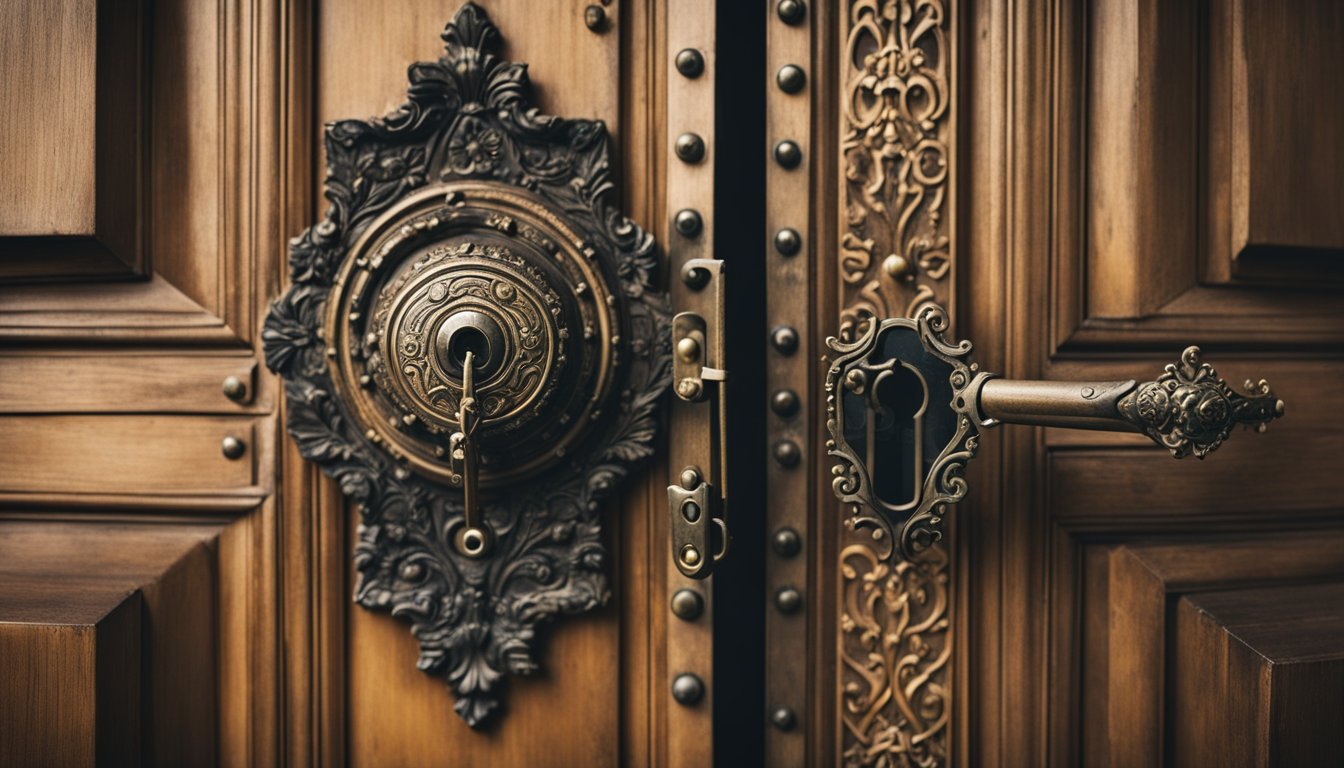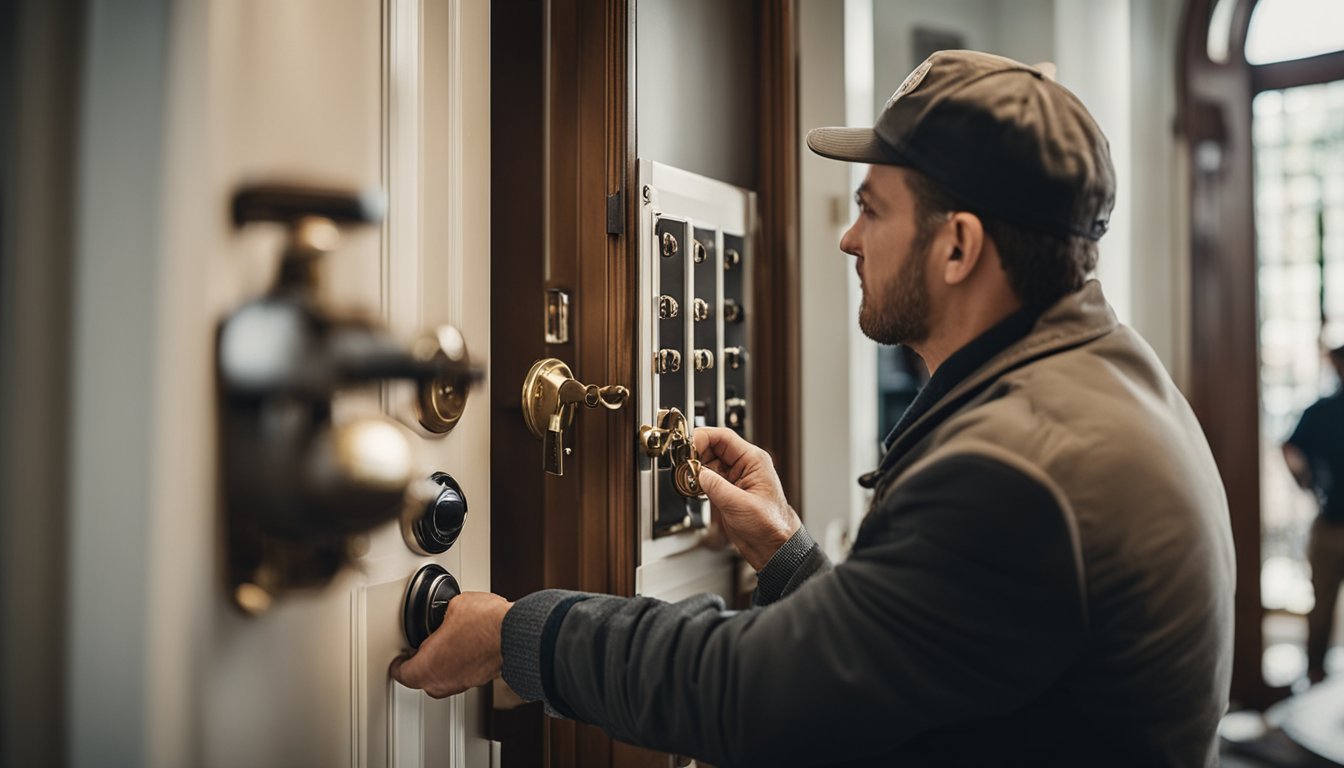Late updated: 17 Oct 2024 08:10
Written by: Elena Prescott
Understanding Traditional Lock Types for Older Homes: A Guide to Vintage Security Solutions
In the world of home security, understanding lock mechanisms from older homes is essential for maintaining safety and peace of mind. Vintage dwellings often feature traditional lock types like rim latch locks and mortise locks, each offering unique benefits and challenges. Selecting the right lock for these homes not only enhances security but also preserves the architectural charm.

As we explore these traditional locks, it becomes evident that they serve more than just practical purposes. They embody a classic aesthetic that modern locks often lack. Their designs, while historic, have stood the test of time due to their straightforward yet effective methods of securing a home. With this in mind, restoring and maintaining these locks can provide an authentic and secure living experience.
Security and operational efficiency can also be achieved by combining these traditional locks with modern advancements. While maintaining traditional appearances, we can incorporate new technologies for enhanced protection and convenience. The choice is ours to seamlessly blend timeless design with cutting-edge innovations, ensuring that our homes are secure and stylish.
Key Takeaways
- Traditional locks offer unique security benefits and preserve architectural charm.
- Vintage locks can be complemented with modern technology for enhanced security.
- Maintenance and understanding are key to optimising traditional lock systems.
Understanding Lock Mechanisms and Types
In this exploration, we delve into various traditional lock types that provide different levels of security and aesthetics for older homes. We aim to understand how these mechanisms work, their applications, and factors such as durability and access control.
Mortise and Cylinder Locks
Mortise locks are traditional and robust, often found in older homes known for their durability and aesthetic appeal. They require a pocket cut into the door where the lock fits, making them slightly more complex to install. Components include a lock body and a spindle, which connects to a knob or lever.
By contrast, cylinder locks are popular due to their simple mechanism and ease of replacement. They typically consist of a cylinder that rotates when a key is inserted. These locks offer a good balance between security and cost-efficiency, making them a staple in residential settings.
Deadbolts and Padlocks
Deadbolts are a staple in home security, providing a higher level of protection compared to spring bolt locks. Single-cylinder deadbolts use a key on the outside and a thumb turn on the inside, while double-cylinder models require a key from both sides, enhancing security but potentially complicating emergency egress.
Padlocks are versatile, coming in keyed and combination variants. Keyed padlocks are reliable for securing outdoor items, needing a key for operation. Combination padlocks, however, eliminate the need for a key, making them a convenient option for gates and lockers.
Lever Handle Locks and Knob Locks
Lever handle locks are user-friendly, requiring a simple push down of the lever to open the door. These locks are favoured in commercial settings but also suit older homes where ease of use is a priority, providing accessibility without sacrificing security.
Knob locks feature a turning mechanism and are often used in residential interior doors. While aesthetically pleasing, they are less secure for exterior doors due to vulnerabilities in the locking mechanism. Nonetheless, they are valuable additions for areas prioritising privacy over maximum security.
Modern Advances and Customisation Options

In recent years, traditional locks have evolved significantly thanks to technological advances, bringing forth options like keyless entry and technology enhancements for older homes. These innovations enhance security while offering increased convenience and flexibility.
Keyless Entry and Smart Locks
Keyless entry has gained popularity for its convenience and enhanced security. Smart locks enable homeowners to secure their property without traditional keys. These electronic locks offer features like remote access, allowing us to lock or unlock doors via smartphones or other devices. Smart home systems can integrate these locks, providing enhanced control and monitoring.
Smart locks often come with various customisation options to suit different needs. They offer temporary access codes for guests or service providers, reducing the risk of unauthorised access. Compatibility with our existing systems is crucial, as some smart locks may not support all smart home networks. Maintenance ought to be regular to ensure optimal performance and security.
Enhancing Traditional Locks with Technology
Even traditional locks can benefit from modern technology. Enhancements such as electronic keypads or card readers can transform standard locks, offering added layers of security. These systems can track access times, providing valuable data in case of security incidents.
Professional locksmiths often recommend reinforcing older locks against forced entry. Upgrading to high-security locks or adding extra layers like deadbolts improves durability. Customisation options exist that allow us to balance aesthetics with security, ensuring our doors remain attractive while secure.
Improved access control systems can prevent unauthorised entry while maintaining ease of use. These technological advancements make securing older homes more achievable without compromising on style or traditional charm.
Frequently Asked Questions

In older homes, unique lock designs present an array of intriguing mechanisms. Our examination will focus on typical types and identification methods, exploring their historical and functional significance.
What are the various types of locks found in older properties?
Older properties often feature mortice locks, rim locks, and warded locks. Mortice locks, embedded in the door itself, provide reliable security. Rim locks, mounted on the door surface, were commonly used in the Victorian era. Warded locks, with simple lever mechanisms, were frequently seen in medieval structures.
How can one identify the lock mechanism on a traditional door?
Identifying lock mechanisms requires checking for distinguishing features such as key shapes and lock placements. Mortice locks usually require a unique, lever-based key. Rim locks have visible surface fittings. A key’s intricacy often alludes to a warded lock. Inspection of both the door and key can offer significant clues.
What are the working principles of vintage door locks?
Vintage door locks operate on basic mechanical principles. Mortice locks utilise levers inside the lock body, engaging with a bolt. Rim locks work via a latch mechanism and sometimes incorporate a deadbolt. Warded locks rely on a series of barriers allowing only correctly shaped keys to move the bolt.
Can you list the common lock systems used in historical residences?
Historical residences commonly used lock systems such as latch locks, lever locks, and coffin locks. Latch locks provided basic security, often supplemented by a bolt. Lever locks, still prevalent today, offered more complexity and strength. Coffin locks, less common now, contributed to varied security tactics in older architectures.
Which types of door locks are typically seen in heritage homes?
In heritage homes, we often see box-shaped rim locks and intricate mortice locks. Decorative knobs and keys often accompany these locks, reflecting the craftsmanship of their time. These locks not only secure but also represent the period’s aesthetic values, blending functionality with artistic elements.
What considerations should be taken into account when selecting locks for period houses?
When selecting locks for period houses, it's vital to balance security with historical accuracy. Choosing locks that align with the architectural style and era enhances authenticity. Consider lock compatibility with modern security needs while preserving the integrity and appearance of your heritage home.
